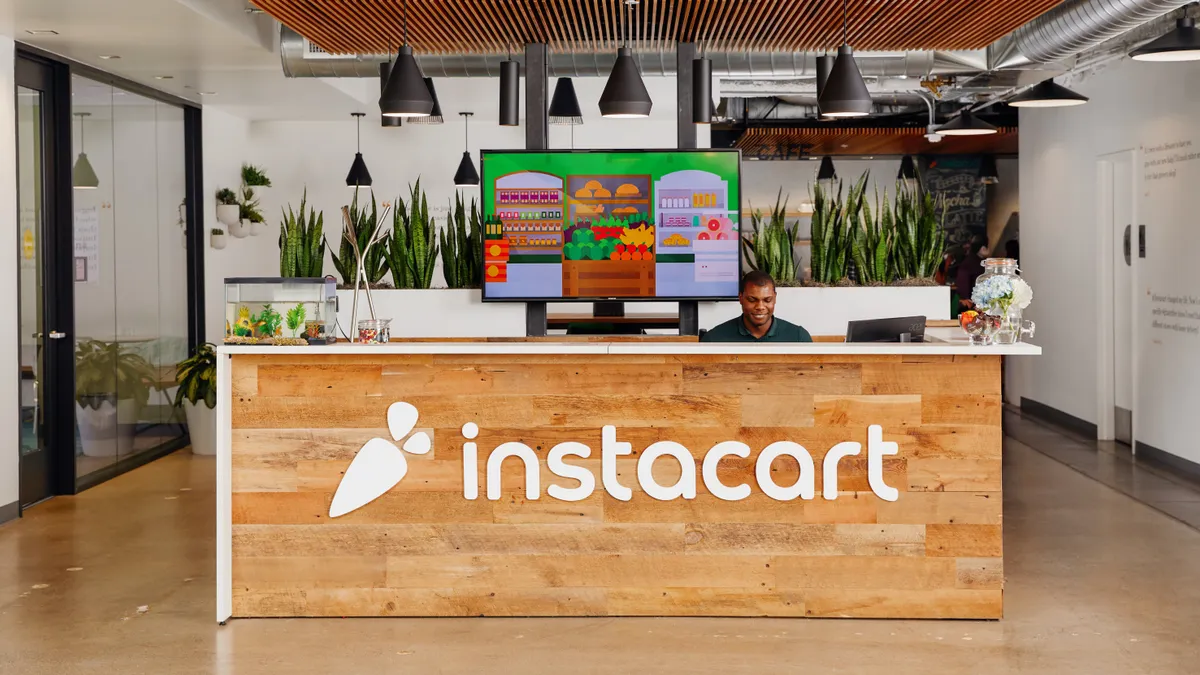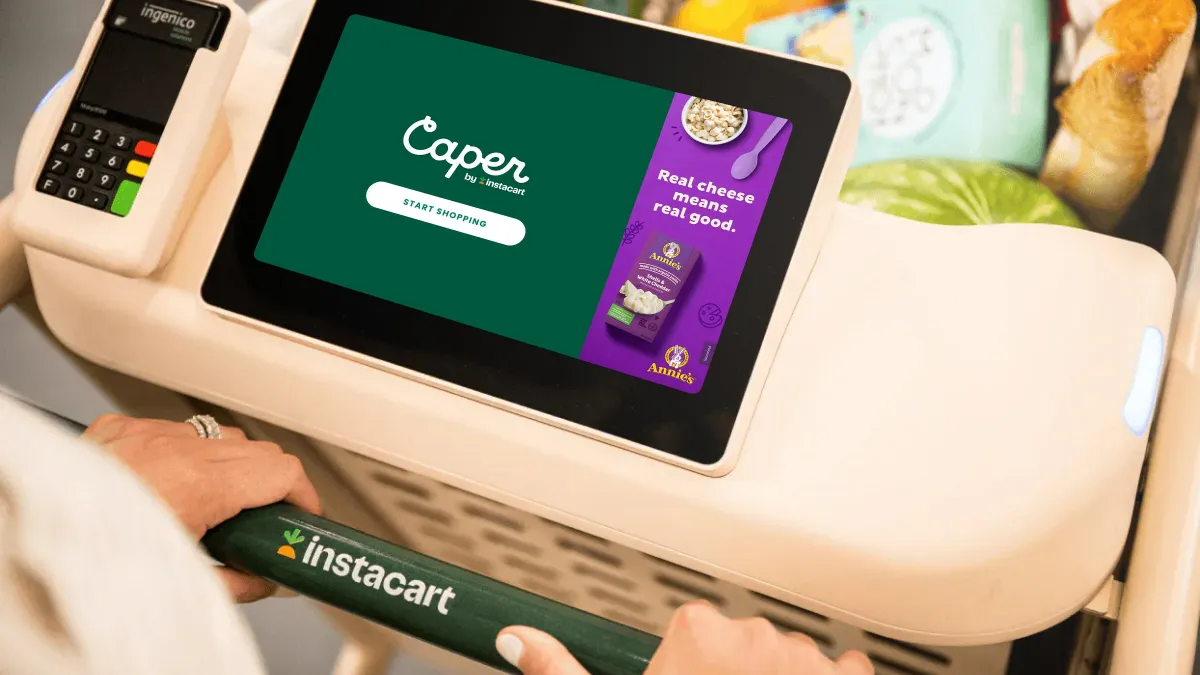Natalie Williams is omni product development leader at NielsenIQ.
In a year of monumental online sales, few impacted the CPG industry’s growth more than Instacart. The third-party grocery delivery and pick-up service provider grew CPG sales by more than $15 billion in 2020, second only to Amazon.
With more than 500 retailers now available through its platform, Instacart has expanded its reach across banners and channels. The company brought grocery e-commerce to the masses, leveraging gig workers as personal shoppers and retailers’ physical stores for inventory — with varying levels of retailer endorsement.
To win in today’s dynamic grocery business, retailers of all shapes and sizes need to understand the three faces of Instacart in order to properly identify which elements of omnichannel commerce they want to own. Read on for a closer look at each of those profiles.
1. Instacart is a high-growth tactic for retailers to join the digital commerce game.
Many retailers have sought alliances with Instacart to serve as their sole e-commerce arm. The company delivers a turnkey e-commerce solution for retailers looking to avoid hefty capital and resource investments to meet shopper demand. With the growing proliferation of retail curbside pick-up options, Instacart offers a meaningful service to meet customer needs while leveraging existing retail infrastructure. In return, Instacart takes a cut of sales through targeted price increases and order fees.
Even retailers that have invested in their own e-commerce platforms, like Kroger, use Instacart to reach a wider shopper base. Instacart’s shoppers are more affluent and spend more online than buyers from any other e-commerce retailer, according to NielsenIQ’s e-commerce data. With its growing cross-channel shopper base, Instacart provides retailers an expanded audience of shoppers who would otherwise not purchase from their retailer-branded sites.
Whether it’s speed to market, cost avoidance or an opportunity to expand their shopper base, — not to mention the triple-digit online growth many retailers have experienced through Instacart — the benefits of jumping on the “Instacart bandwagon” have never been more clear. What’s less clear is the non-monetary cost it bears on retailers.
2. Tread lightly when partnering
Retailers can benefit greatly from engaging directly with Instacart to take ownership of their presence on Instacart’s platform, their in-store Instacart dynamics and the platform’s rich data from Instacart shoppers. However, retailers should proceed with caution. By outsourcing elements of the end-to-end e-commerce experience to Instacart, retailers cede control over the customer relationship — most critically, their customer data — to a third party, in turn causing some grocers to question the relationship.
Take a lesson from Target, Toys R Us and Borders. In the early 2000s, these retailers were brick-and-mortar giants in their respective categories, looking to meet growing customer demand for e-commerce. They handed over their e-commerce capabilities to a niche, digital-first e-tailer’s white-label platform. The digital experience was highly templated, delivering standardized features and functionality, offering very little differentiation in customer experience.
By the time Toys R Us and Borders built their own offerings, it was too late. Both retailers lagged competitors in establishing a viable online business and succumbed to bankruptcy. Target got out just in time, given their category breadth. That little-known white-label service was Amazon’s early foray into accelerating digital commerce adoption and fundamentally changing the way people shopped for durable goods — which hit an inflection point nearly 15 years ago.
That same inflection point is happening within the grocery industry now. Amazon knows the value of owning the transaction and customer relationship better than anyone. When Amazon entered the grocery space by acquiring Whole Foods, it discontinued what was Instacart’s largest retailer relationship at the time and brought Whole Foods’ e-commerce service in-house via Amazon Prime Now.
Retailers need to invest in their own digital offerings to work in parallel with Instacart. To succeed, retailers must leverage digital shopper data to inform their strategies both in-store and online, and work to ultimately win back the transaction from Instacart or risk losing increasingly important shopper touchpoints.
3. Retail stores are no longer needed to fulfill e-commerce demands.
The decisions retailers make regarding their Instacart engagements today will have lasting effects, both positive and negative, on their long-term business success. Regardless of the decision each retailer makes, Instacart is in the business of continuing its record-setting growth. But there will be a time when Instacart’s land-and-expand strategy will reach the point of diminishing returns. Shopping physical retail stores and delivering groceries to homes is a negative-margin business today. Profits come in optimizing the efficiency of online grocery fulfillment through dark stores and automation.
Unable to control retailers directly, Instacart will likely develop a way to fulfill orders themselves. They already have the required ingredients to cut out the middleman in search of greater profitability. The only question is: when? Instacart knows what shoppers want cross-category — when, where and how — irrespective of retailer format.
Instacart has established direct relationships with manufacturers — primarily focused on digital promotions today. For top retailers, sales facilitated by Instacart grew to 15% of total retail sales and represented 100% of those retailers’ year-over-year growth in 2020, according to NielsenIQ data. If Instacart drives the majority of retail growth, manufacturers will continue to shift funds from in-store tactics to Instacart’s platform, and it is not a huge leap to imagine Instacart establishing direct-buying relationships with brands. (Editor's note: Instacart has denied it plans to sell directly to consumers, noting "Instacart's entire product and model is predicated on being a chief ally to our retail partners.")
Looking forward, as we lap the record 2020 year of grocery e-commerce, retailers must balance their long-term strategies with the immediate benefits and growth Instacart delivers. Regardless of retailer size, format or geographical location, Instacart cannot be ignored.
Retailers must be strategic in leveraging Instacart’s capabilities to their advantage. Only time will tell what the lasting effects will be of outsourcing what is now intrinsic to the grocery shopping experience: the ability to shop in-store and online for what consumers want.




















